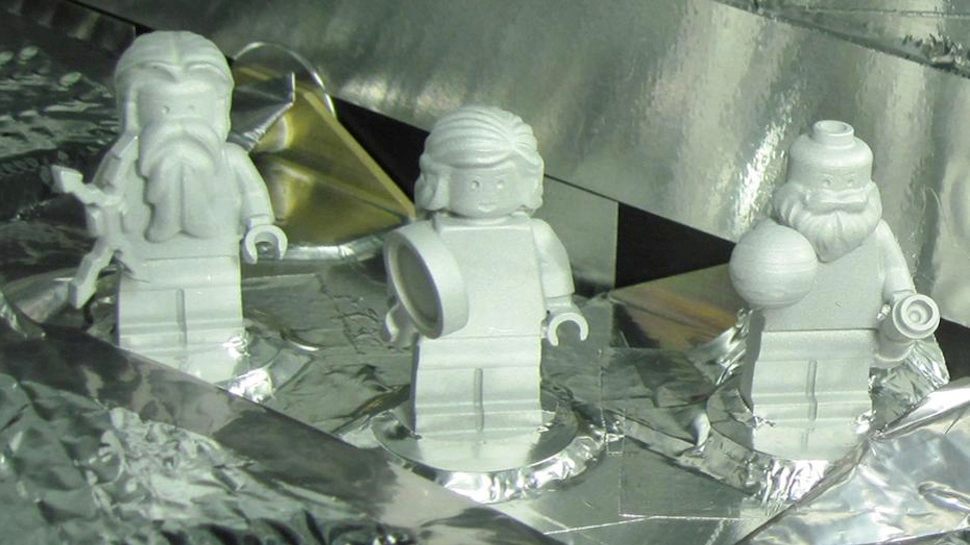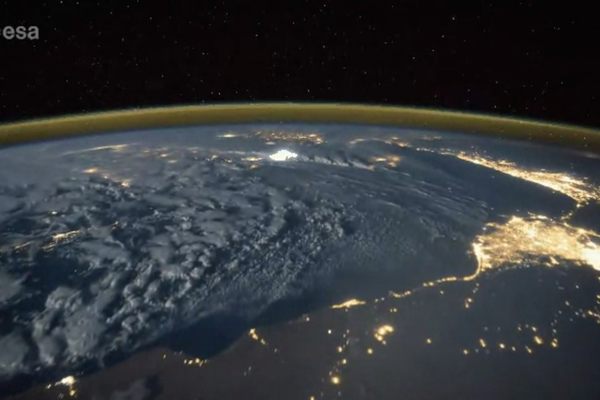Galileo Finally Made It to Jupiter (In Lego Form, at Least)
He was joined by a god and a goddess.

Galileo, Juno and Jupiter are currently getting great views of our solar system’s biggest planet. (Photo: NASA/Public Domain)
When Galileo first observed Jupiter’s four largest moons back in 1610, he probably realized his discovery would irrevocably shake up the solar system. Staring up at the stars and planets, he may even have mused that future humans would someday reach them.
But odds are good that even Galileo didn’t realize that, when NASA sent an unmanned probe to the solar system’s largest planet, he would be aboard it—albeit in Lego form.
As Nerdist recently reminded us, when NASA’s Juno probe hit its target on Monday, it was carrying three aluminum minifigs—a god, a goddess and one man.

The three minifigs, in position on the spacecraft. (Photo: NASA/Public Domain)
Tiny Galileo, whose bald head is topped by a shiny peg, has got a telescope, along with a model of Jupiter about 7,000,000,000 times smaller than the actual planet. Mini-Juno, Queen of the Gods, holds a magnifying glass, representing the search for truth. And the bite-sized god Jupiter wields magical lightning and sports an impressive Lego beard. All three are molded from solid aluminum, to protect them from Jupiter’s harsh radiation.
NASA’s Jet Propulsion Laboratory first announced the hitchhikers in August 2011, right before Juno blasted off. Thus far, they seem to have brought good luck—the spacecraft stuck a very difficult orbital landing, and is now cruising steadily around the gas giant, beaming information back to Earth.
Although human children will never get to play with the toys—they will be destroyed, along with the rest of Juno, during a planned crash in 2018—they can, like Galileo before them, gaze up at the night sky and wonder what other cool, unreachable stuff is out there.
Every day, we track down a fleeting wonder—something amazing that’s only happening right now. Have a tip for us? Tell us about it! Send your temporary miracles to [email protected].









Follow us on Twitter to get the latest on the world's hidden wonders.
Like us on Facebook to get the latest on the world's hidden wonders.
Follow us on Twitter Like us on Facebook